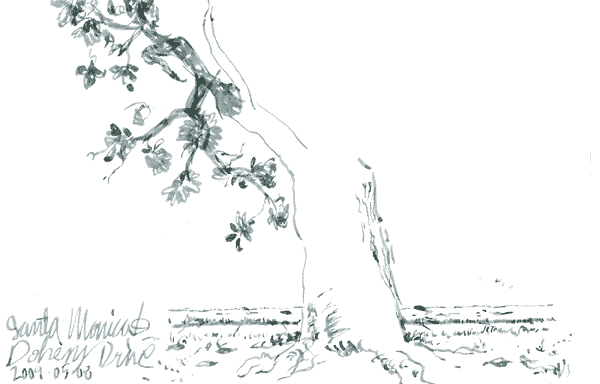Leave a Comment
People, however, will hardly stay in one position very long before reconfiguring their limbs and posture into a completely different pose, with the subtle gestures of action the most fleeting of all. To work quickly, I tried drawing small and what you see here are some of the better results from a few pages of sketching.
The tree is a more cooperative model, and I enjoyed experimenting with different pen strokes to suggest the textures of surfaces and edges present in the scene. Sketching like this feels like teaching the hand to dance. Rather than copying the scene line for line, I’m interpreting visual patterns into evocative rhythmic hand wiggles, and the drawing emerges as a recording of that dance.
In Drawn to Life, Walt Stanchfield talks about approaching gesture drawing by feeling the pose — using one’s internal kinesthetic sense to lock onto the position, balance and attitude:
“By looking at it, you have to keep looking at it repeatedly as you copy the parts. In feeling the pose you actually picture yourself as doing the pose….Then you have that pose locked into your mind and can summon it up at will by simply seeing it in your mind and assuming that attitude.”
I think I understand what he’s talking about, and have felt this strong empathetic connection with the subject at times when drawing feels most fluid, but it’s a state of focus that is difficult to flip on and off like a light switch. Interestingly, I’ve found that there’s something about drawing quickly can help engage this sense.


